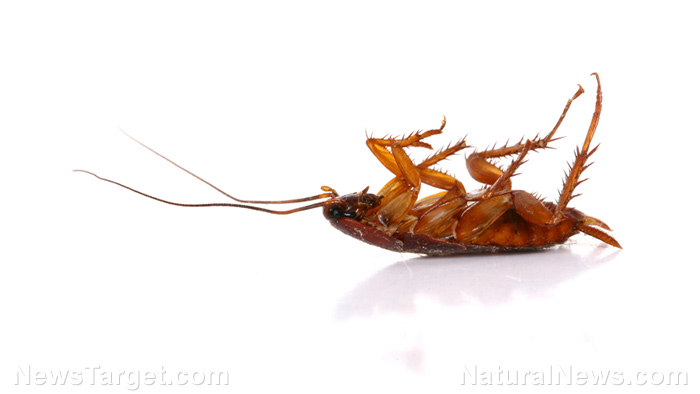
A linear polymer of N-acetyl glucosamine, chitin is said to be the most abundant aminopolysaccharide polymer in nature. It is a common post-harvest food additive that, believe it or not, is derived from the exoskeletons of crustaceans, insects, and the cell walls of fungi.
You would have no idea it is there, but chitin, or chitosan, is slathered over vegetables and fruit as a protective coating to prolong their shelf life. It is also used on eggs, meat, and in dairy products (Related: The powers that be want us all eating not just chitin but whole insects).
Preharvest, chitosan is spread around artichoke seeds, for instance, which allows for artificially easier germination – meaning more profits for food companies. The insect-derived compound is also used to accelerate root system growth – again for quicker and more profitable harvests.
"Soybean seeds coated by chitosan had anti-feeding effects and protected against several insect pests, and coating rice seeds increased antifungal effect, stimulated seeding growth, improved root system, and increased crop yield," reports explain.
"Tomato seeds coated with chitosan resulted in resistance to infection by inducing plant defense mechanisms. Chickpea seeds treated with chitosan-silver nanoparticles promoted germination and increased biomass, chlorophyll, carotenoids, and protein contents as well as amylase activity and defense enzyme activities. Similar effects were demonstrated in maize seeds coated with Cu / chitosan nanoparticles."
Chitin is similar to plastic and it's in your food
In food packaging, chitin and chitosan-based materials are similarly used to extend shelf life and protect against food spoilage and poisoning.
"Chitosan-based materials have food-preserving antioxidant activity and film-forming ability, which allows the production of transparent foils and bags," reports add.
"By combining chitin and cellulose, manufacturers can generate a durable, natural film."
Similar to PET (polyethylene terephthalate), a common plastic material used in beverage bottles and containers, chitin is something that is not necessarily good to eat. After all, would you eat actual PET? Of course not.
The food industry also synthesizes it into what is known as microcrystalline chitin (MCC), which artificially enhances taste and flavor in foods. It is also used to keep meat looking red for much longer than it normally would, or in seafood to keep it from smelling old and rancid.
Chitin is even sprayed on clothing to provide antimicrobial protection, as well as in textile material to keep it from breaking during the weaving process. And once again, it is unlabeled.
Since it is similar to plastic, chitin is also used as a binder for dyes and glues, paper fabrics, absorbent pads, hygiene products, and tissues.
In medicine, chitin is often secretly added to lower patients' cholesterol levels by "mopping" up from the digestive system. The consumption of chitin also reduces cholesterol absorption efficiency.
Contrary to popular belief, cholesterol is actually not a bad thing. When one's body is plagued by systemic inflammation, cholesterol can lodge itself within the arteries leading to health problems, but this is not the fault of cholesterol itself.
Cholesterol is a necessary building block of the brain. Without it, our brains would starve to death. It is inflammation that causes cholesterol to be harmful as the body simply uses cholesterol to try to repair the resulting cardiovascular damage.
Chitin consumption can inhibit the body's absorption of cholesterol as well its existing cholesterol levels. In this capacity, it functions much like a statin drug – and millions of people are eating it, wearing it, and medicating with it without even knowing it.
If you enjoyed reading this story, you can find more like it at FoodScience.news.
Sources for this article include:
" target="_blank">ncbi.nlm.nih.gov
Please contact us for more information.






















